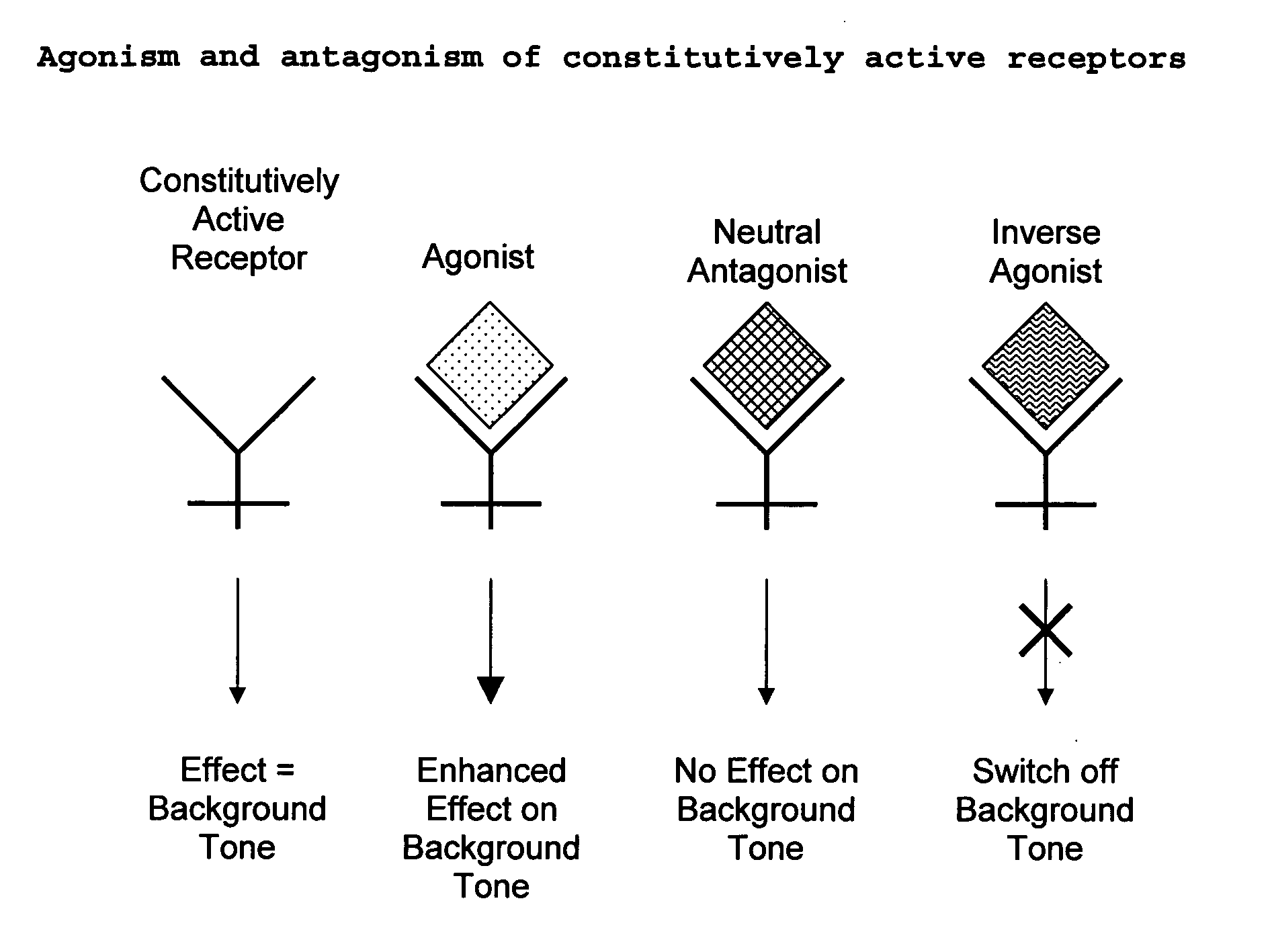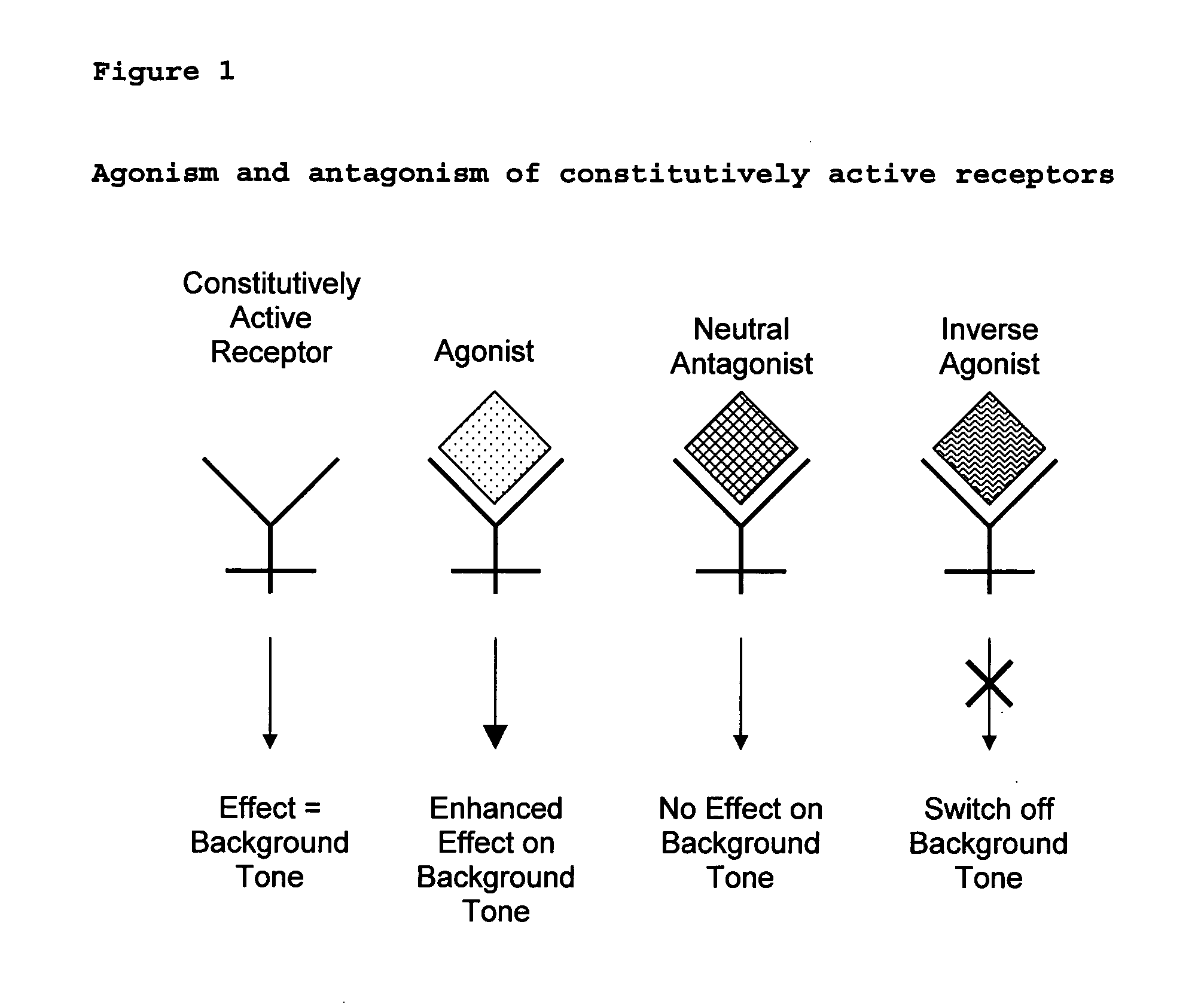New pharmaceutical formulation comprising cannabidiol and tetrahydrocannabidivarin
a technology of cannabidiol and tetrahydrocannabidivarin, which is applied in the field of new pharmaceutical formulations, can solve the problems of lack of efficacy as receptor agonist, lack of inverse agonist, lack of receptor agonist efficacy, etc., and achieves the effects of improving energy expenditure and food conversion efficiency, enhancing treatment options, and producing beneficial weight loss in obese mammals
- Summary
- Abstract
- Description
- Claims
- Application Information
AI Technical Summary
Benefits of technology
Problems solved by technology
Method used
Image
Examples
example 2
[0134]A mixture is prepared by melting together the following ingredients:
Glycerol mono-oleate10partsSoy lecithin5partsCBME - to give CBD1partCBME - to give THCV2partsAlpha-tocopherol0.1partAscorbyl palmitate BP0.1partGlycogelatin to produce100parts
[0135]The components are mixed together over a gentle heat and poured into moulds whilst hot. The product in moulds is formed into a rigid gel and sealed in an inert atmosphere. The relatively large size of this dosage form (1-2 g) allows a large amount of active ingredient to be incorporated into the dosage form. Each dose unit may be administered by allowing to dissolve in the mouth, sublingually, buccally or swallowed whole or in smaller units.
example 3
[0136]A smaller unit dosage form may be prepared using the following example, whereby a smaller amount of active can be incorporated. The following example is particularly suitable for an oral dosage form such as a tablet.
Glycerol monosterate (self emulsifying grade)5partsPolysorbate 800.5partsLactose (direct compression grade)79.3partsSoluble starch10partsCBME - to give CBD2.5partsCBME - to give THCV2.5partsAscorbyl palmitate0.1partAlpha-tocopherol0.1partEthanol (dehydrated) BP10parts
[0137]The glycerol monosterate, polysorbate, alpha-tocopherol and CBMEs are dispersed and dissolved in the ethanol. This solution is then sprayed onto the dry poweder ingredients which have been thoroughly mixed. The ethanol is allowed to evaporate and the granules are dusted with 1% talc and compressed to the target tablet weight of 101 mg in a conventional tablet press. Biconvex punches with a diameter of 7-9 mm are used to produce tablets with a high surface to weight ratio. These are able to absorb...
example 4
[0139]The generation of an emulsion from a self-emulsifying formulation is not limited to solid dosage forms. In the following example three liquid formulations suitable for sublingual application are exemplified. A solution is produced by melting together, at a temperature not exceeding 50° C., the following ingredients:
ABCDEGlycerol mono-oleate22222(self-emulsifying)Medium chain triglyceride5————Cremophor RH403026.5———CBME - to give CBD5197.52.5CBME - to give THCV5912.57.5Alpha-tocopherol0.10.10.10.10.1Ascorbyl palmitate0.10.10.10.10.1Propylene glycol——44——Ethanol (to give)100100100100100
[0140]The products formed by mixing these ingredients are dispersed in 10 ml quantities into a glass vial ad closed with a pump action break-up button. Each actuation of the pump delivers a fine spray which can be directed to an area of the buccal or sublingual mucosae or can be simply sprayed into the mouth and swallowed.
[0141]Solutions based on ethanol alone are generally not suitable to be used...
PUM
| Property | Measurement | Unit |
|---|---|---|
| temperature | aaaaa | aaaaa |
| chromatographic purity | aaaaa | aaaaa |
| chromatographic purity | aaaaa | aaaaa |
Abstract
Description
Claims
Application Information
 Login to View More
Login to View More - R&D
- Intellectual Property
- Life Sciences
- Materials
- Tech Scout
- Unparalleled Data Quality
- Higher Quality Content
- 60% Fewer Hallucinations
Browse by: Latest US Patents, China's latest patents, Technical Efficacy Thesaurus, Application Domain, Technology Topic, Popular Technical Reports.
© 2025 PatSnap. All rights reserved.Legal|Privacy policy|Modern Slavery Act Transparency Statement|Sitemap|About US| Contact US: help@patsnap.com



